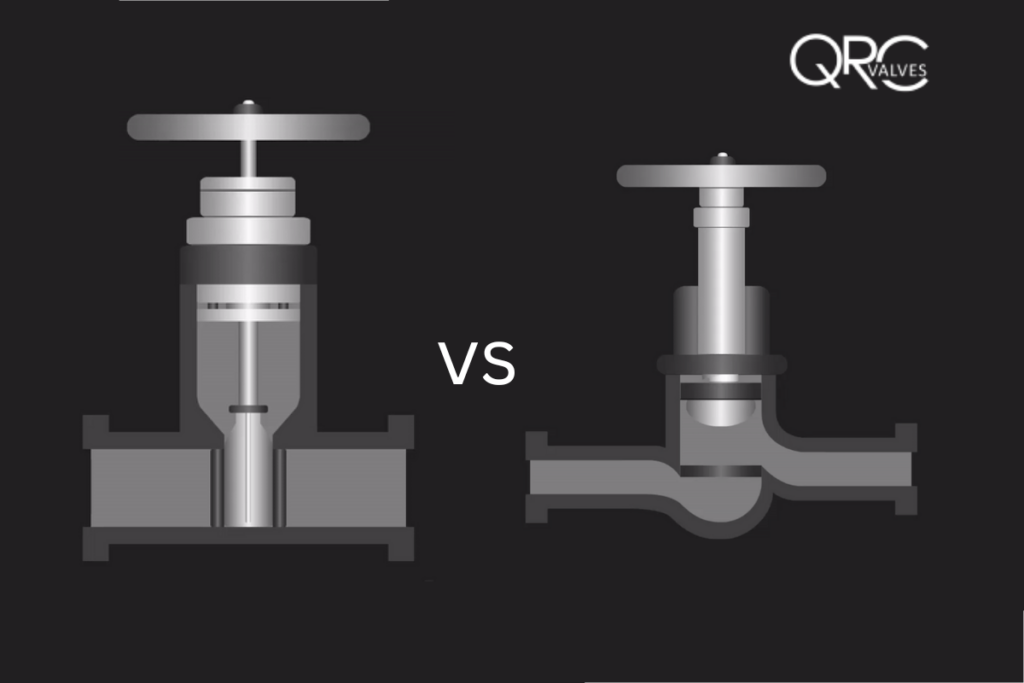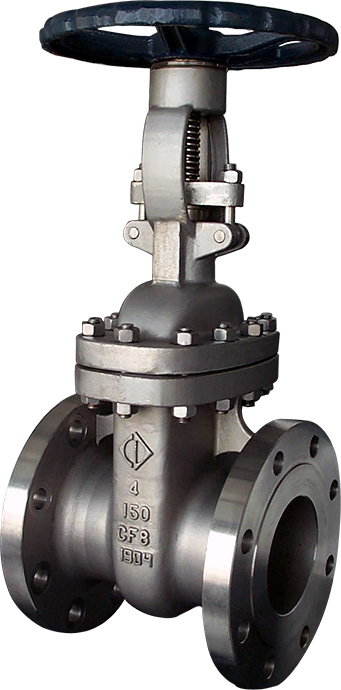Gate vs. Globe Valves

In fluid control systems, selecting the appropriate valve is crucial for ensuring efficient operation and longevity of the system. Among the plethora of valve types available, gate valves and globe valves are common options, but with distinct features and applications. Understanding the differences between these valves is essential for engineers and industry professionals. This article delves into the characteristics of each valve type, a comparative analysis of gate vs globe valves, and making the right choice between them.
Gate Valves
Gate valves are linear valves with a wedge-shaped disc that moves perpendicular to the flow of fluid within the pipeline. The valve disc moves downwards towards the seat to completely shut off flow or moves upwards to the fully open position.

When fully open, the valve disc offers minimal obstruction to flow, thus, there is minimal pressure drop across gate valves. This reduces fluid turbulence and makes gate valves suitable for both low and high-pressure applications. Gate valve components come in a variety of types; the stem can be rising or non-rising, and the disc can be wedge, knife, or parallel. Further, the bonnet can be screwed, welded, bolted, or pressure sealed. These numerous features enable gate valves to satisfy varying demands in different applications, which is responsible for its widespread use in industry.
Globe Valves
Globe valves feature a spherical-shaped body with a movable disc or plug that regulates flow as it moves parallel to the flow direction. This type of movement enables the precise control of the flow rate across the valve by adjusting the position of the disc. Thus, globe valves are common in applications requiring throttling like steam systems, cooling water systems, and process control. Similar to gate valves, globe valves also have reliable sealing even in high-pressure applications. They are also known for their long-term durability. One downside of globe valves is that there is a significant pressure drop across the valve due to the complex flow pattern. Although manufacturers can customize the flow pattern to suit a client’s project, there are three common flow patterns.
-
- Tee Pattern: Flow across the valve follows a “T” shape, as fluid enters in one direction and exits in another. This pattern improves the valve’s control and sealing abilities, but results in significant pressure drop and low CV values. It is ideal in applications requiring a change in flow direction.
-
- Angle Pattern: In angle pattern globe valves, the flow path is at a 90-degree angle to the inlet and outlet ports. This design is beneficial at 90-degree elbows and in tight spaces. Moreover, the pressure drop in this pattern is less than in the Tee pattern.
-
- Wye (Y) Pattern: This has a much smoother flow path (approximately 45°) in comparison with other flow patterns. As a result, there is less flow resistance and pressure drop.
Features of Gate Valves vs Globe Valves
| Features | Gate Valve | Globe Valve |
| Structure | Has a simpler construction with most internal components at the top part of the valve body. As a result, the valve body is hollow when fully open. | On the contrary, many valve parts are inside the cavity itself. This helps in providing positive shut-off and throttling but also contributes to high pressure drop. |
| Operating Mechanism | The valve disc moves perpendicularly to the flow direction. Therefore, it has to traverse the entire pipe diameter to fully open or close the valve, making valve operation relatively slow. | Valve disc moves parallel to the flow, so only little motion is required to achieve full flow. They are effective as quarter-turn valves. |
| Function | Flow rate is not proportional to valve opening. Rather, valves may experience vibration when partially open. Thus, it only provides either full flow or no flow. | The relationship between valve disc motion and flow rate is predictable. They are ideal for throttling applications. |
How to Choose Between Gate Valves and Globe Valves

Gate valves and globe valves share similarities as they are both linear motion valves, excel at isolation applications, and can be either rising or non-rising. Selecting between them involves taking several factors into account to ensure the satisfaction of system requirements.
Flow Conditions: Evaluate the flow conditions within the system such as fluid properties, flow rate, and pressure. Gate valves are preferrable for applications with minimal flow restrictions, low-pressure drop requirements, and flow having slurry or contaminated media. The gate valve disc, especially the knife type, can cut through contaminants in the flow and ensure a tight seal. Alternatively, globe valves are the go-to option when precise flow control and throttling are important, but they do not seal properly when the flow is contaminated with slurry.
Another factor is the flow direction. Gate valves are bi-directional, but globe valves allow flow in only one direction.
Operating Environment: Consider the temperature, pressure variations, and if there are corrosive or abrasive fluids present. Globe valves generally have more robust construction and reliable sealing so are ideal for harsh operating conditions. In gate valves, the stem is usually exposed to the flow media, which causes leakage in the long run due to deterioration. But globe valves can shut off flow without any contact with its stem.
Installation and Maintenance: Gate valves typically have simpler designs and fewer internal parts, which makes for easier installation and maintenance.
Cost Considerations: Evaluate the initial cost, long-term maintenance expenses, and the overall lifecycle expenditure of the valve. Although gate valves are cheaper initially and easier to maintain, globe valves may offer better reliability and performance in the long-term. Thus, lower lifecycle costs result.


